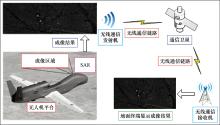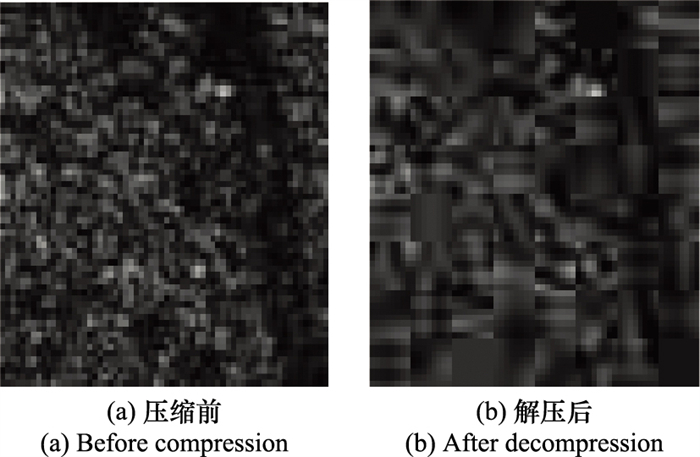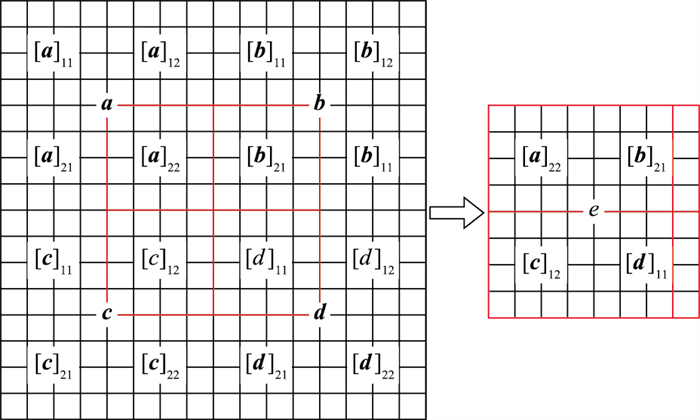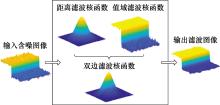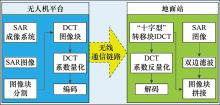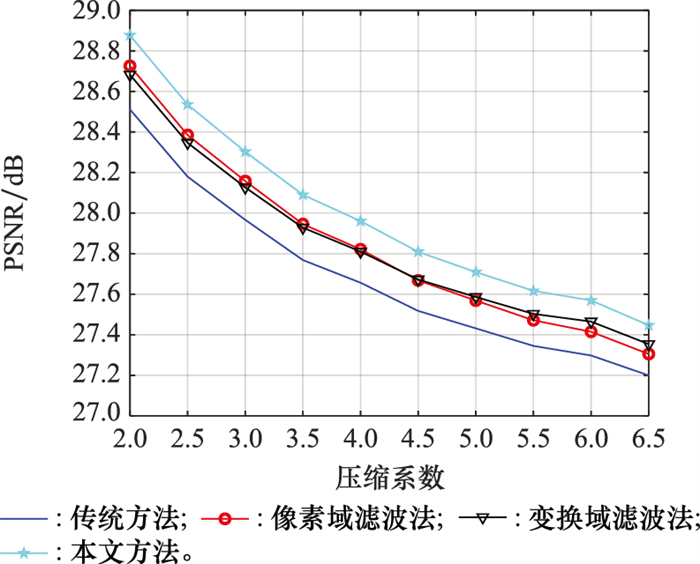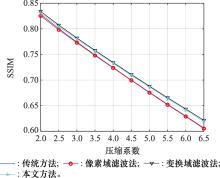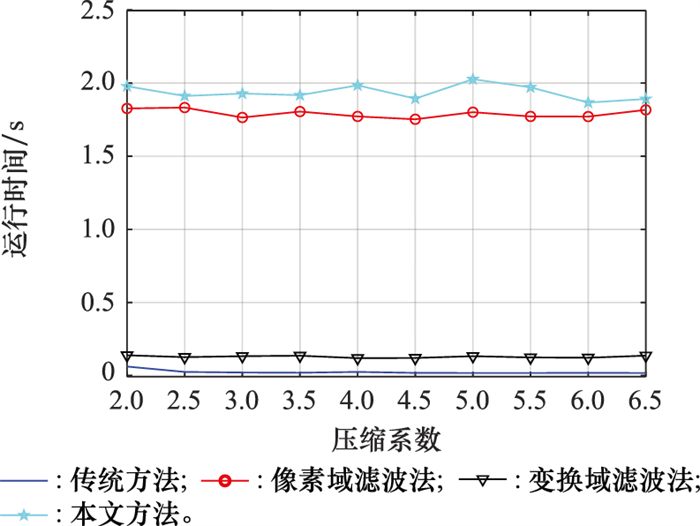Systems Engineering and Electronics ›› 2023, Vol. 45 ›› Issue (9): 2768-2776.doi: 10.12305/j.issn.1001-506X.2023.09.15
• Sensors and Signal Processing • Previous Articles Next Articles
Block effect suppression method of UAV-borne SAR image based on joint domain filtering
Zhongbao WANG, Kuiying YIN
- The 14th Research Institute of China Electronics Technology Group Corporation, Nanjing 210039, China
-
Received:2022-03-14Online:2023-08-30Published:2023-09-05 -
Contact:Zhongbao WANG
CLC Number:
Cite this article
Zhongbao WANG, Kuiying YIN. Block effect suppression method of UAV-borne SAR image based on joint domain filtering[J]. Systems Engineering and Electronics, 2023, 45(9): 2768-2776.
share this article
| 1 | EVEARERTS J .The use of unmanned aerial vehicles (UAVs) for remote sensing and mapping[J].International Archives of the Photogrammetry, Remote Sensing and Spatial Information Sciences,2008,37,1187-1192. |
| 2 |
SIMIC M A , CRACKNELL A P , WARNER T A .Drones—the third generation source of remote sensing data[J].International Journal of Remote Sensing,2018,39(21):7125-7137.
doi: 10.1080/01431161.2018.1523832 |
| 3 | DING Z G , LI L H , WANG Y , et al.An autofocus approach for UAV-based ultra wideband SAR data with frequency-dependent and 2-D space-variant motion errors[J].IEEE Trans.on Geoscience and Remote Sensing,2022,60,5203518. |
| 4 | ZENG T , LIU M K , WANG Y , et al.Tomographic SAR imaging with large elevation aperture: a P-band small UAV demonstration[J].Science China (Information Sciences),2022,65(3):211-224. |
| 5 | LI W R, CHEN X, LI G C, et al. Construction of Yunnan's agricultural ecological civilization based on intelligent UAV and SAR image analysis[C]//Proc. of the 4th International Conference on Smart Systems and Inventive Technology, 2022: 1639-1642. |
| 6 | 林岳峥, 祝利, 王海.全球鹰无人侦察机的技术特点与应用趋势[J].飞航导弹,2011,(9):21-24, 32. |
| LIN Y Z , ZHU L , WANG H .Technical characteristics and application trends of global Hawk unmanned reconnaissance aircraft[J].Flying Missiles,2011,(9):21-24, 32. | |
| 7 |
沈亮, 欧阳平.捕食者系列无人机特点及发展经验[J].飞航导弹,2012,(12):33-36.
doi: 10.16338/j.issn.1009-1319.2012.12.007 |
|
SHEN L , OUYANG P .Characteristics and development experience of Predator series UAVs[J].Missiles for Flight,2012,(12):33-36.
doi: 10.16338/j.issn.1009-1319.2012.12.007 |
|
| 8 |
SHARKEY N .Death strikes from the sky: the calculus of proportionality[J].IEEE Technology and Society Magazine,2009,28(1):16-19.
doi: 10.1109/MTS.2009.931865 |
| 9 |
TSOUROS D C , BIBI S , SARIGIANNIDIS P G .A review on UAV based applications for precision agriculture[J].Information,2019,10(11):349.
doi: 10.3390/info10110349 |
| 10 |
YIN K Y , LI Q X , LIANG J M , et al.Visual time-sensitive SAR target detection technology based on human brain mapping[J].The Journal of Engineering,2019,2019(21):8085-8088.
doi: 10.1049/joe.2019.0731 |
| 11 |
KIM S , JEON S , KIM J , et al.Multichannel W-band SAR system on a multirotor UAV platform with real-time data transmission capabilities[J].IEEE Access,2020,8,144413-144431.
doi: 10.1109/ACCESS.2020.3014700 |
| 12 | BEKAR A , ANTONIOU M , BAKER C J .Low-cost, high-resolution, drone-borne SAR imaging[J].IEEE Trans.on Geoscience and Remote Sensing,2022,60,5208811. |
| 13 |
DING M L , DING C B , TANG L , et al.A W-band 3-D integrated mini-SAR system with high imaging resolution on UAV platform[J].IEEE Access,2020,8,113601-113609.
doi: 10.1109/ACCESS.2020.3003273 |
| 14 | STACY N J, CRAIG D W, STAROMLYNSKA J, et al. The global hawk UAV Australian deployment: imaging radar sensor modifications and employment for maritime surveillance[C]// Proc. of the IEEE International Geoscience and Remote Sensing Symposium, 2002, 2: 699-701. |
| 15 |
MERCIER G .Reflectivity estimation for SAR image compression[J].IEEE Trans.on Geoscience and Remote Sensing,2003,41(4):901-906.
doi: 10.1109/TGRS.2003.810224 |
| 16 |
EICHEL P R , IVES W .Compression of complex-valued SAR images[J].IEEE Trans.on Image Processing,1999,8(10):1483-1487.
doi: 10.1109/83.791978 |
| 17 |
SHEN L , RANGAYYAN R M .A segmentation-based lossless image coding method for high-resolution medical image compression[J].IEEE Trans.on Medical Imaging,1997,16(3):301-307.
doi: 10.1109/42.585764 |
| 18 |
NASRABADI N M , KING R A .Image coding using vector quantization: a review[J].IEEE Trans.on Communication,1988,36,957-971.
doi: 10.1109/26.3776 |
| 19 |
TELLEZ D , LITJENS G , LAAK J , et al.Neural image compression for gigapixel histopathology image analysis[J].IEEE Trans.on Pattern Analysis and Machine Intelligence,2021,43(2):567-578.
doi: 10.1109/TPAMI.2019.2936841 |
| 20 |
WU H , SUN X Y , YANG J Y , et al.Lossless compression of JPEG coded photo collections[J].IEEE Trans.on Image Processing,2016,25(6):2684-2696.
doi: 10.1109/TIP.2016.2551366 |
| 21 |
NGUYEN C , REDINBO G R .Fault tolerance design in JPEG 2000 image compression system[J].IEEE Trans.on Dependable and Secure Computing,2005,2(1):57-75.
doi: 10.1109/TDSC.2005.11 |
| 22 |
WU W , KIM H K .A novel rate control initialization algorithm for H. 264[J].IEEE Trans.on Consumer Electronics,2009,55(2):665-669.
doi: 10.1109/TCE.2009.5174437 |
| 23 | LIU S, GU M M. K-L transform in video compressed sensing[C]//Proc. of the 32nd Chinese Control Conference, 2013: 4528-4532. |
| 24 |
BLANES I , SERRA S J .Cost and scalability improvements to the Karhunen-Loêve transform for remote-sensing image coding[J].IEEE Trans.on Geoscience and Remote Sensing,2010,48(7):2854-2863.
doi: 10.1109/TGRS.2010.2042063 |
| 25 |
AHMED N , NATARAJAN T , RAO K .Discrete cosine transform[J].IEEE Trans.on Computers,1974,C-23(1):90-93.
doi: 10.1109/T-C.1974.223784 |
| 26 |
WU Y G , TAI S C .Low bit rate subband DCT image compression[J].IEEE Trans.on Consumer Electronics,1997,43(2):134-140.
doi: 10.1109/30.585531 |
| 27 | 严珍珍, 刘建军.基于离散余弦变换的图像压缩编码方法及改进[J].计算机技术与发展,2016,26(1):147-149. |
| YAN Z Z , LIU J J .Improved image compression coding method based on discrete cosine transform[J].Computer Technology and Development,2016,26(1):147-149. | |
| 28 | HACIHALILOGLU I, KARTA M. DCT and DWT based image compression in remote sensing images[C]//Proc. of the IEEE Antennas and Propagation Society Symposium, 2004: 3856-3858. |
| 29 | ANDREADIS A, BENELLI G, GARZELLI A, et al. A DCT-based adaptive compression algorithm customized for radar imagery[C]//Proc. of the IEEE International Geoscience and Remote Sensing Symposium Proceedings, 1997, 4: 1993-1995. |
| 30 | MA J C , YANG B Z , GAO Y S , et al.SAR image compression using optronic processing[J].Journal of Engineering,2019,19,5982-5985. |
| 31 |
PARK H , PARK Y , OH S K .L/M-fold image resizing in block-DCT domain using symmetric convolution[J].IEEE Trans.on Image Processing,2003,12(9):1016-1034.
doi: 10.1109/TIP.2003.816008 |
| 32 |
ALKACHOUH Z , BELLANGER M G .Fast DCT-based spatial domain interpolation of blocks in images[J].IEEE Trans.on Image Processing,2000,9(4):729-732.
doi: 10.1109/83.841948 |
| 33 | XUE J W, XIE X, LI G L, et al. Guided frequency filter for block-DCT compressed capsule endoscopic images[C]//Proc. of the IEEE Biomedical Circuits and Systems Conference, 2018. |
| 34 | ZHEN H H, SHI M, YI Q M. A block-based DCT and multiresolution reordering scheme for high resolution image coding[C]// Proc. of the 2nd International Conference on Consumer Electronics, Communications and Networks, 2012: 13-16. |
| 35 | BO Y , GUO L , QIAN X L .A new adaptive bilateral filtering[J].Journal of Applied Sciences,2012,30(5):517-523. |
| 36 | ZHANG M , GUNTURK B K .Multiresolution bilateral filtering for image denoising[J].IEEE Trans.on Image Processing,2008,17(12):2324-2333. |
| 37 | CHEN B H , TSENG Y S , YIN J L .Gaussian-adaptive bilateral filter[J].IEEE Signal Processing Letters,2020,27,1670-1674. |
| 38 | CHAUDHURY K N , SAGE D , UNSER M .Fast O(1) bila-teral filtering using trigonometric range kernels[J].IEEE Trans.on Image Processing,2011,20(12):3376-3382. |
| [1] | Honghai ZHANG, Zhenping REN, Ouge FENG, Fei WANG, Hao LIU. Logistics unmanned aerial vehicle flight plan pre-allocation in urban low-altitude airspace [J]. Systems Engineering and Electronics, 2023, 45(9): 2802-2811. |
| [2] | Yufeng LIANG, Jingchao ZHAO, Wangkui LIU, Lei WANG, Shipeng WANG, Shilong RUAN. Air combat guidance method based on top rolling optimization and bottom tracking [J]. Systems Engineering and Electronics, 2023, 45(9): 2866-2872. |
| [3] | Huizhu HAN, Yangchao HUANG, Hang HU, Qi AN, Shihao LIU. Energy-spectrum efficiency trade-off optimization based on short packet transmission in UAV communication [J]. Systems Engineering and Electronics, 2023, 45(9): 2956-2964. |
| [4] | Xiaogang QI, Yutong ZHOU, Lifang LIU. Evaluation of the reliability of UAV swarm for ground combat missions [J]. Systems Engineering and Electronics, 2023, 45(9): 2971-2978. |
| [5] | Lei SHENG, Manhong SHI, Yingchuan QI, Hao LI, Mingjun PANG. Dynamic offense and defense of UAV swarm based on situation evolution game [J]. Systems Engineering and Electronics, 2023, 45(8): 2332-2342. |
| [6] | Tong XU, Yazhou CHEN, Yuming WANG, Min ZHAO. Research on wideband white noise electromagnetic interference effect of UAV data link [J]. Systems Engineering and Electronics, 2023, 45(7): 1965-1973. |
| [7] | Xiaocao YANG, Yanli DU, Yunong BU, Yanbin LIU, Cheng GAO. Online three-dimensional RRT* cooperative route planning based on hierarchical decomposition [J]. Systems Engineering and Electronics, 2023, 45(5): 1409-1419. |
| [8] | Dongdong ZHANG, Chunping WANG, Qiang FU. Ship target detection in SAR image based on feature-enhanced network [J]. Systems Engineering and Electronics, 2023, 45(4): 1032-1039. |
| [9] | Yang PANG, Ming WANG, Ziyi YAN, Tongyao YUE, Zhe ZHOU. UAV localization method with multi-view fusion [J]. Systems Engineering and Electronics, 2023, 45(4): 1127-1133. |
| [10] | Kun FANG, Xiaohui LI, Tao FAN. High-precision positioning algorithm for UAV based on random forest weight compensation [J]. Systems Engineering and Electronics, 2023, 45(1): 202-209. |
| [11] | Tianye SUN, Wei SUN, Jianjun WU. UAV formation rapid assembly method based on improved Quatre algorithm [J]. Systems Engineering and Electronics, 2022, 44(9): 2840-2848. |
| [12] | Jing YU, Enmi YONG, Hanyang CHEN, Dong HAO, Xiancai ZHANG. Bi-level mission planning method for multi-cooperative UAV air-to-ground attack [J]. Systems Engineering and Electronics, 2022, 44(9): 2849-2857. |
| [13] | Jianfeng YANG, Heye XIAO, Liang LI, Junqiang BAI, Weihao DONG. Multi-level module partition method of UAV based on fuzzy clustering and expert scoring mechanism [J]. Systems Engineering and Electronics, 2022, 44(8): 2530-2539. |
| [14] | Yuanjie LU, Zhimin LIU, Zhixiao SUN, Dong KAN. Model-based integrated evaluation of UAV system architecture [J]. Systems Engineering and Electronics, 2022, 44(4): 1239-1245. |
| [15] | Yuanyuan ZHANG, Yang GAO, Peng ZHU, Jintao LIU, Shushan GU. UAV reconnaissance tactical planning based on colored Petri nets [J]. Systems Engineering and Electronics, 2022, 44(3): 900-907. |
| Viewed | ||||||
|
Full text |
|
|||||
|
Abstract |
|
|||||
